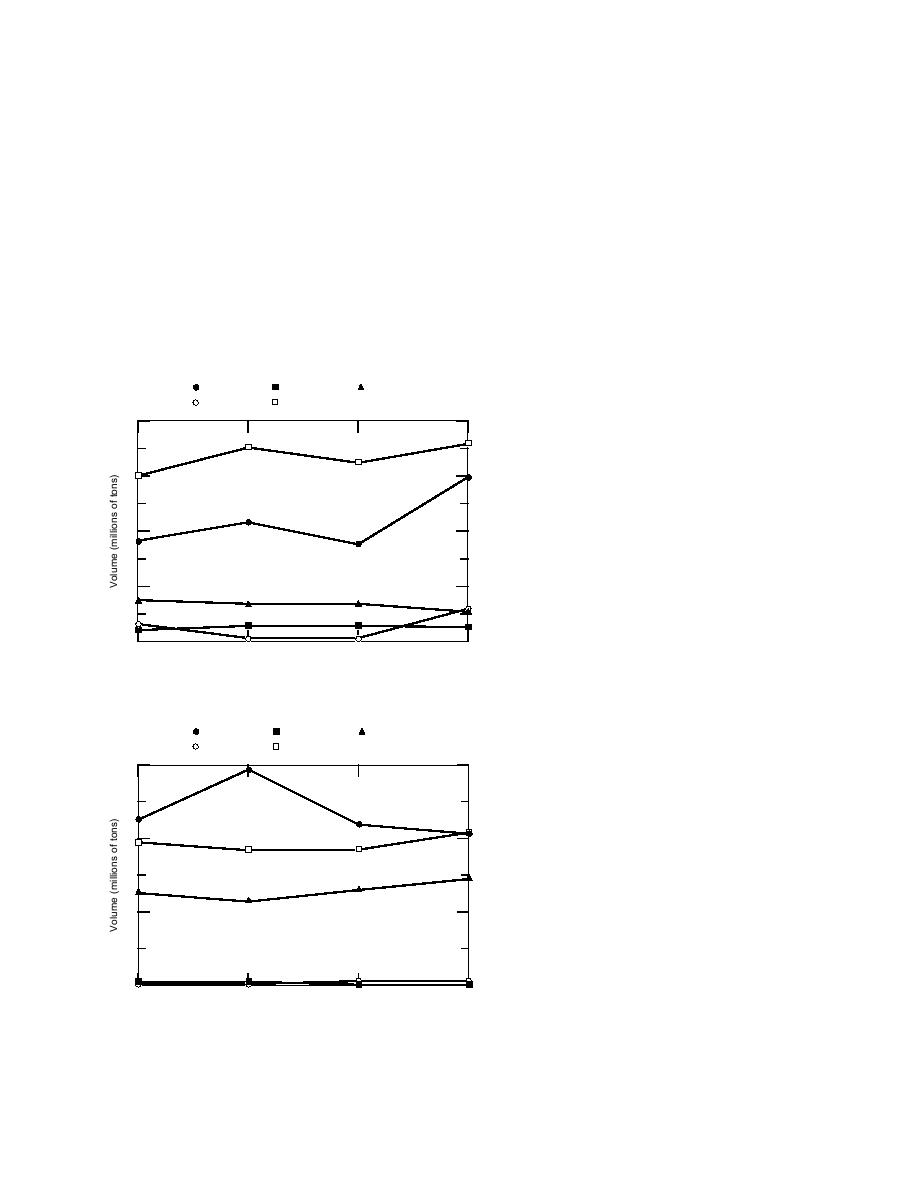
impediment to foreign imports to this region. Mod-
consolidation, and imports that are distributed
est shipments of construction equipment, oil and
from domestic break-bulk points to smaller ports.
gas exploration equipment, general, and contain-
These products are typically raw or bulk materials
erized cargo are necessary for the raw material
bound for industrial processing centers, fuels (both
extraction activities of the region. The majority of
raw and finished), construction equipment and
these supply shipments will be cabotage; any im-
housing materials, finished goods, foodstuffs, and
ported cargoes will have been broken down into
general cargo to supply outer settlements. Sand
smaller loads at domestic ports for distribution to
and gravel, grain, coal, and fertilizer are major
the settlements.
cabotage goods. Fish and reindeer meat are north-
ern food exports that are important to the indig-
Cabotage
enous economies. The transfer of railway freight
Cabotage cargoes are products that are trans-
to large, Pacific Rim island population centers
ported from one Russian coastal port to another.
(Sahkalin and the Kurils) via ferry transport ac-
counted for 73% of all Federation cabotage in 1992.
Cabotage consists of both materials bound for ex-
port that are shipped to larger domestic ports for
Transit cargo
Transit shipments are those that traverse
the NSR but originate and end outside its
Dry Bulk
Refrigerated
Other Dry
Liquid Bulk
General
bounds. They utilize the route only as a con-
8
venient path of progress between the North
Atlantic and North Pacific regions. Ideally,
they would bypass all intermediate ports in
6
the interest of saving time, but they would
still require icebreaker escort and rely on Rus-
sian facilities or services along the way in an
4
emergency.
Arpiainen estimates that potentially 10 mt
of cargo would transit the route annually,
including 4 to 5 mt of dry bulk cargo, 2 mt of
2
container cargo, and 1 to 2 mt of other cargo.
This is a small figure compared with the cargo
that moves through the Suez Canal (280 mt)
0
1983
1984
1985
1986
and the Panama Canal (160 mt), so it is un-
Figure 29. Trade volume from Europe to the North Pacific
likely that canal authorities would adjust their
region by cargo type (from Arpiainen 1994).
passage fees to appreciably alter traffic flows
to the NSR.
Figures 29 and 30 show the composition
Dry Bulk
Refrigerated
Other Dry
Liquid Bulk
General
of trade between Europe and the North Pa-
6
cific as reported by Arpiainen (1994). Poten-
tial cargoes from the North Pacific to the
North Atlantic include coal, ores, grain, tim-
ber (logs and sawn), automobiles, pulp and
paper waste, and container goods. Potential
4
cargoes in the reverse direction include con-
tainer and general cargoes, foodstuffs (raw
and processed), and refrigerated food prod-
ucts (seafood, meat, dairy products, fruit, and
2
vegetables).
SHIPPING COSTS
0
1983
1984
1985
1986
It should be emphasized that few foreign
Figure 30. Trade volume from the North Pacific region to
ships have undertaken an NSR voyage, so
Europe by cargo type (from Arpiainen 1994).
52



 Previous Page
Previous Page
